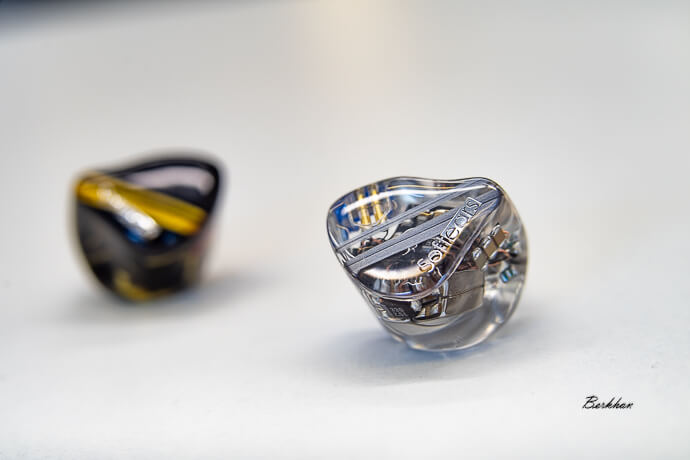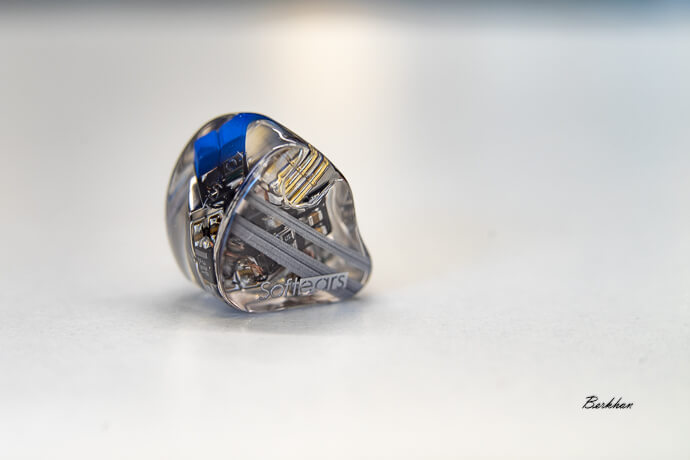Technical Performance
Cerberus has a wider and deeper soundstage than the RS10. That’s one of the most noticeable differences when you compare it to the RS10. The 10 driver co-flagship has a studio feeling on its stage, whereas the Cerberus feels like a concert atmosphere, from one of the front-middle seats.
Aside from the stage, the resolution and transparency are on high levels but that strong as in the RS10. The RS10 is more precise and sharp in terms of overall imaging, while the Cerberus has a warmer tuning so everything is not incredibly separated like what its counterpart offers.
The most striking factor of the Cerberus is its tonal accuracy and quality. All the instruments have great liveliness and breath, and their timbre is fantastic. It just feels so natural and life-like. If you read my reviews from time to time, you may know that I give great importance to instrument timbre, and the Cerberus has a fabulous timbre.
Once again, balance and cohesiveness are great just like the rest of the lineup from Softears. They surely know how to tune their IEMs to get the best and most ideal balance and refinement as well as coherency. All of these three models I’ve tried from Softers no doubt have shown and proven their qualities in terms of that.
Comparisons
Well, the first obvious comparison is the RSV. This costs much, much less with almost one-third of the price of these co-flagships. No-sound topics are very similar in terms of packaging and build quality. However, the RSV fits better with more comfort since it has a smaller shell.
Sound-wise the RSV is the most ideal choice for people who are curious about the Softears tuning. All of the qualities of the co-flagships are present with the RSV, just on a lower level. The resolution and clarity are not incredible like the RS10, and the tonality is not as impressive as with the Cerberus. But it’s not too far away and the price actually doesn’t reflect that. Yes, once again it’s all about the law of diminishing returns here.
If you enjoy warm-sounding, smooth IEMs, the RSV is one of the best possible options and it’s not too far away from high-end stuff. If you have a huge amount of cash and you have a high-end source though, you can throw the money for the RS10 or the Cerberus.
The latest offering from Vision Ears has a fantastic fit, almost like a CIEM, so Softears flagships can’t be that good in that. VE7 also has much better and premium packaging, although it doesn’t have a special cable either. Build qualities are similar so you can count on them all.
Sound-wise the VE7 is very bright when compared, and it’s even brighter than the RS10 with that treble focus and boost. The RS10 is a more all-rounder performer since it has a bit better coherency and body for many genres. The VE7 suits Classical music incredibly well, as well as vocal-focused tracks. The RS10 can sound great with everything, the VE7 can’t. That doesn’t make it worse though, both have different strengths. One thing is for sure; the VE7 has more shimmer, air, and space in its sound so it feels very spacious, more so than the RS10.
Cerberus is quite different from both with a warm approach and thicker tonality. Its mids are better especially in terms of timbre, and its bass is very controlled and feels very natural. It falls behind when it comes to treble extension and definition against the VE7. It has wider staging than both, but the VE7 feels very spacious and airy. They’re all great high-end IEMs and they’re only separated with their own approaches. But if you like to have a technical-sounding IEM with great resolution, you can choose either RS10 or VE7.
Pneuma is a fantastic IEM and first of all, it has a great unboxing experience, and once again Softears offerings lack in that department. Pneuma also fits a bit better and comes with SpinFit tips as well as hybrids and standard silicones. It also comes with PwAudio No.10, a great cable for the price on its own.
RS10 is flatter and more detailed with better resolution, whilst the Pneuma has more bass, especially in the mid-bass area, without even opening the bass switch. To me, it has better tonality than the RS10 with its treble being a bit more extended. It also has a slightly bigger soundstage. The RS10 is the definition of reference so it has better bass tightness and decay, more transparency and detail as well as better separation. But if you listen to more popular music, the Pneuma is a better choice in the high-end area.
The Cerberus has better and more balanced bass. The mid-bass body in the Pneuma sometimes feels a bit too much with Jazz recordings in particular. They both have a big sound stage, but the Pneuma has a better treble definition and extension. However, the Cerberus is fantastic when it comes to instrument reproduction. I can’t stress that enough. It’s also more coherent and balanced overall.

Softears RS10 & Cerberus
Conclusion
This has been a long article but the length was required to describe the sound qualities of these co-flagships from Softears. They’re both extraordinary from their design to the build & sound quality.
The RS10 gives the feeling of professional studio equipment to mix and master your songs. It’s almost like high-quality studio reference speakers. The Cerberus on the other hand is like a bookshelf speaker with fantastic tonal accuracy and musicality. They’re both fantastic IEMs in their own way.
What can be improved you might ask. Well, they need to start with the packaging and provide better tips. They also need to provide a much better cable with these flagships, since it’s almost tragical to attach that cable to these precious models. Sound-wise, the RS10 needs a very tiny adjustment in the treble to extract a bit more extension and that’s it. For the Cerberus, the treble needs a bit more definition and the rest is very good. And these factors may be better with CIEM versions, which I will have from Softears soon.

Softears RS10
So, would I recommend them? Well, yes, for the sound quality alone, these two are fantastic flagship IEMs in terms of tuning. But I would not recommend them to the people who are tight on budget and who don’t have flagship-level sources. Because to extract these qualities fully, you would need a great source. For those people, I would simply say get the RSV and call it a day. It has a much better value overall than both.
But once you listen to the RS10 and the Cerberus from a top-tier source, it’s not easy to go back to the RSV. I put aside a lot of my IEMs to listen to these two. The RS10 is in the office, and the Cerberus is at home. That’s all you need to know. These two are special. They’re not the most bang for buck products, actually far from that, but to the people who know what they’re looking for, and have good ears, these would prove themselves every single time.
Page 2: Build Quality, Cables, Fit and Sound Quality – RS10
Page 3: Technical Performance – RS10, Sound Quality – Cerberus
Page 4: Technical Performance – Cerberus, Comparisons and Conclusion








